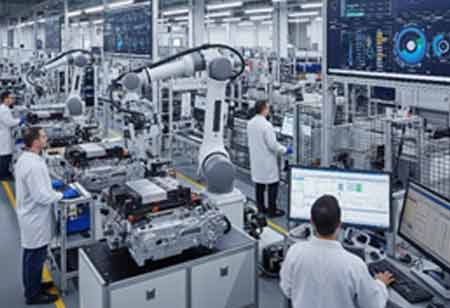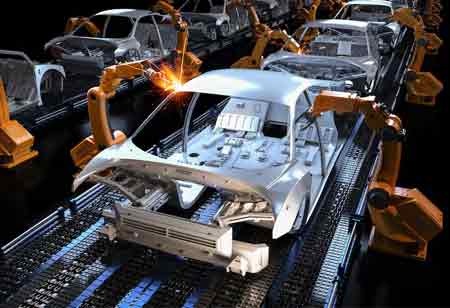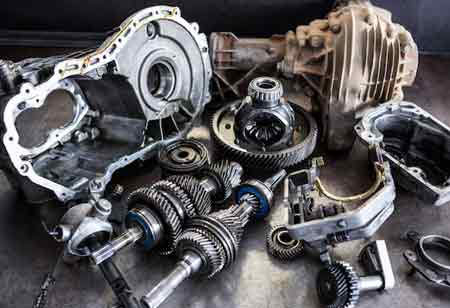Thank you for Subscribing to Auto Business Outlook Weekly Brief
Latin America's Shift to Electric Mobility: Challenges and Innovations in Parts Manufacturing
Automotive parts manufacturers are shifting focus to electric vehicles, facing challenges like supply chain volatility, labor shortages, and regulatory compliance while embracing innovation and adapting to new production demands.

By
Auto Business Outlook | Friday, September 05, 2025
Stay ahead of the industry with exclusive feature stories on the top companies, expert insights and the latest news delivered straight to your inbox. Subscribe today.

Historically regarded as a crucial yet discreet component of the automotive supply chain, parts manufacturers have now emerged at the forefront of a significant transformation in vehicle production. Their role has shifted from merely supporting traditional assembly lines to facilitating the future of electric, connected, and software-driven mobility. In light of the increasing prevalence of electric vehicle platforms, evolving regulatory mandates, and the growing demand for lighter and more intelligent components, manufacturers are facing mounting pressure to innovate while also ensuring operational resilience.
The contemporary automotive parts sector transcends the mere fulfillment of orders; it necessitates an adaptive approach to ongoing disruptions. Factors such as supply chain instability and technological convergence are reconfiguring every facet of production. This era presents both formidable challenges and unique opportunities for manufacturers who are prepared to evolve alongside an industry undergoing profound reinvention.
Innovation Driven by Electrification and Evolving Mobility
Electrification is one of the most significant forces reshaping the demand landscape for automotive parts manufacturers. As internal combustion engine vehicles phase down and electric vehicles take center stage, component needs are shifting dramatically. Core parts like transmissions, fuel systems, and exhaust modules are declining in relevance, while new demand is rising for battery casings, cooling systems, electric drivetrains, and onboard charging equipment.
This transition is prompting manufacturers to rethink product portfolios, production methods, and supply partnerships. Some are expanding into adjacent sectors, such as energy storage or consumer electronics, to develop the capabilities required for electric mobility. Those already familiar with high-voltage component design and lightweight materials are gaining an edge as they respond to automakers racing to electrify their fleets.
Product development cycles are also accelerating. Automakers are pushing for faster turnarounds on new models, which in turn requires parts manufacturers to adapt with rapid prototyping, digital design collaboration, and greater manufacturing flexibility. Modular architectures and scalable platforms are becoming standard.
This means that suppliers must now deliver single components and systems that integrate seamlessly across multiple vehicle models.
Lightweighting remains a critical priority. Electric vehicles must offset battery weight to extend range and improve efficiency. This has led to increased adoption of advanced aluminum alloys, carbon fiber composites, and structural plastics. Manufacturers are also looking at new joining methods and materials that enable cost-effective integration without sacrificing durability.
Connected and autonomous vehicles are opening up the demand for a new generation of parts. Manufacturers with expertise in sensors, cameras, radar housings, and electronic control units are seeing growth opportunities. These components require precise manufacturing standards and often tighter integration with software platforms, a challenge for parts makers accustomed to mechanical product lines.
Current Challenges and Strategic Adaptations
Despite the positive momentum, the industry faces several critical challenges. Supply chain volatility remains one of the most pressing. The global disruptions in material availability, shipping bottlenecks, and semiconductor shortages have created unpredictable production timelines and rising input costs. Manufacturers are reevaluating just-in-time inventory models and working to localize supply sources where possible.
Geopolitical uncertainty and protectionist policies in some regions have introduced trade complexities that affect sourcing, pricing, and cross-border operations. The rising cost of raw materials, including steel, aluminum, and rare earth elements used in EV components, squeezes margins. As commodity prices fluctuate, so does the stability of long-term pricing agreements between parts makers and automakers.
Labor shortages are also becoming a structural concern. While automation continues to expand, there is increasing demand for specialized skills in robotics programming, quality control analytics, and smart factory maintenance. In many regions, the manufacturing workforce is aging, and younger talent is gravitating toward other sectors. Manufacturers are launching upskilling initiatives and forging partnerships with technical institutes to build workforce pipelines capable of operating next-generation production environments.
At the same time, the industry must comply with increasingly stringent environmental and safety regulations. From carbon emissions tracking to chemical composition disclosures and vehicle recyclability mandates, compliance now requires deeper data tracking, better reporting infrastructure, and tighter collaboration with downstream partners. Non-compliance is no longer a risk limited to fines. It now impacts contract eligibility and investor confidence.
Opportunities through Smart Manufacturing and Sustainability
Smart manufacturing technologies are helping parts manufacturers boost output while minimizing waste and downtime. Predictive maintenance, real-time quality monitoring, and digital twins enhance production precision, allowing companies to become more agile and reduce costs in a competitive landscape.
Sustainability has become essential, with automakers imposing emissions and ESG requirements on their suppliers. In response, manufacturers are investing in renewable energy, developing closed-loop recycling systems, and measuring carbon footprints, with some linking executive incentives to sustainability goals.
The shift towards circular economy models is creating new revenue streams through refurbished and remanufactured parts, driven by consumer and regulatory demand for sustainable practices. Manufacturers with reverse logistics and repair capabilities can benefit from this trend.
Furthermore, increased vertical collaboration between suppliers and OEMs is allowing for component co-development, optimizing design, and improving supply chain alignment. Digital product passports, blockchain traceability, and real-time supply chain visibility provide transparency and enhance compliance, helping manufacturers improve efficiency and strategic value in a reliable sourcing ecosystem.






